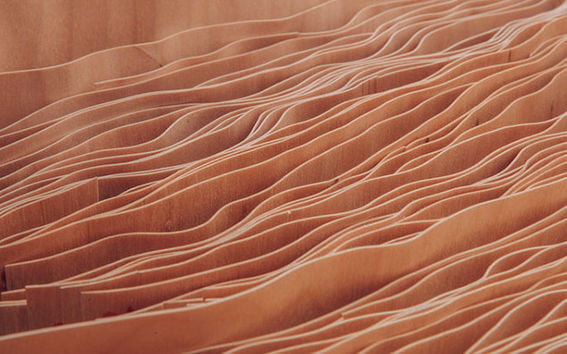What if the textiles of the future are growing in Finnish forests?

Consumption of textile fibres is increasing worldwide by over 3 percent a year, while at the same time cotton farming is shrinking and knowledge of the environmental damage caused by artificial fibres is increasing. It is no wonder that textile sector giants around the world are feverishly looking for alternatives.
Indeed, demand for cellulose fibre is increasing 6 percent per year, but the viscose and Tencel products already on the market are not enough to meet the demand.
‘The manufacturer of viscose requires poisonous carbon disulphide, and Tencel production is all controlled by one company. It is estimated that by 2030 there will be an annual market shortfall of between 10 and 20 million tonnes of cellulose fibre’, says Professor Herbert Sixta. Together with his research group, he is developing the Ioncell method, which can be used to produce top grade textile fibre from cellulose. The manufacturing process uses an ionic solvent developed by Helsinki University Professor Ilkka Kilpeläinen, and suitable raw materials for the process include both dissolving pulp and also recycled paper, cardboard or waste textiles.
The fabric produced has a pleasant feel and a beautiful shine. In terms of strength, it compares very well with cotton, linen and other man-made cellulose fibres.
‘Ioncell is a fantastic textile material in terms of both technical qualities and feel. In addition, it looks very good when dyed. From a designer’s point of view, however, the most important thing is that we can bring to market materials that enable the production of ecologically sustainable textiles’, says Professor of Practice Pirjo Kääriäinen.
Up to this point, the fibre has only been produced in small quantities in laboratory conditions, but the goal is to construct a pilot factory in the next few years. The raw material is abundantly available from Finnish forests, where around one fifth of annual growth is currently left unused. This amount of unexploited forest would produce around 6 million tonnes of cellulose, which if processed to produce a textile fibre of a similar value to cotton would be worth around €7 billion.
About Ioncell
- A method developed by a team led by Aalto University Professor Herbert Sixta for manufacturing regenerated cellulose fibre.
- The production process involves three stages: dissolving the cellulose, spinning the fibre and recovering the solvent. The dissolving is done with an ionic liquid which has been developed in the laboratory of Helsinki University Professor Ilkka Kilpeläinen. The liquid is a safe and environmentally friendly alternative to the solvents currently used in fibre manufacturing processes.
- A variety of experts have been involved in the development of Ioncell, ranging from chemists to textile sector specialists.
- Unique products have been made with Ioncell, including scarves, iPad cases and the Allu dress designed for Marimekko.
- Ioncell has also been awarded two distinguished prizes: The 2015 European Paper Recycling Award and the 2016 H&M Global Change Award
This article is a part of What if series. Find out more at whatif.aalto.fi.
Read more news

Get to know us: Associate Professor Maria Sammalkorpi
Sammalkorpi received her doctorate from Helsinki University of Technology 2004. After her defence, she has worked as a researcher at the Universities of Princeton, Yale and Aalto.
Aalto computer scientists in ICML 2024
Computer scientists in ICML 2024
Getting bacteria into line
Physicists use magnetic fields to manipulate bacterial behaviour